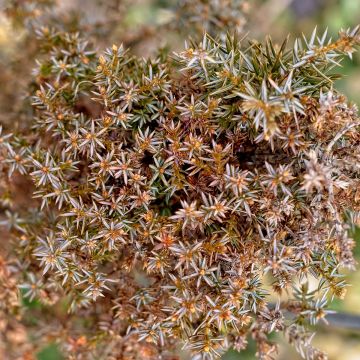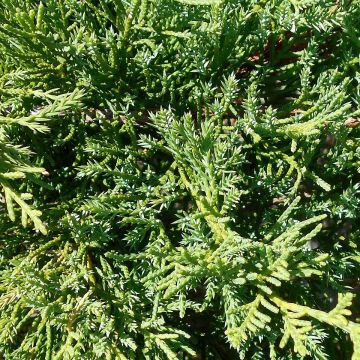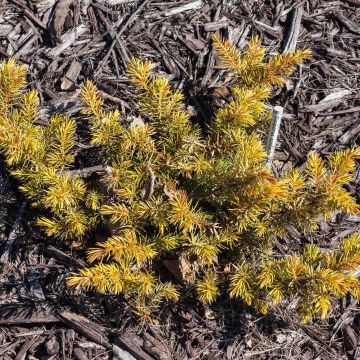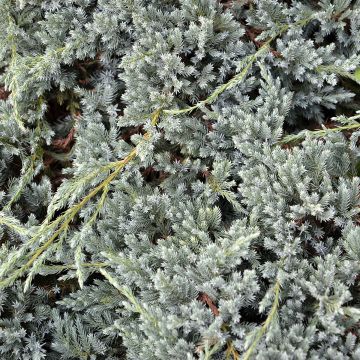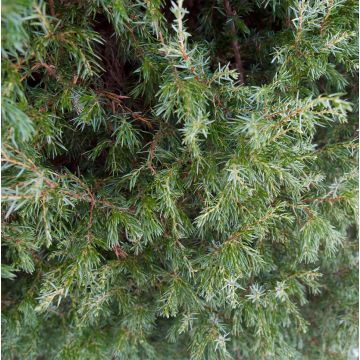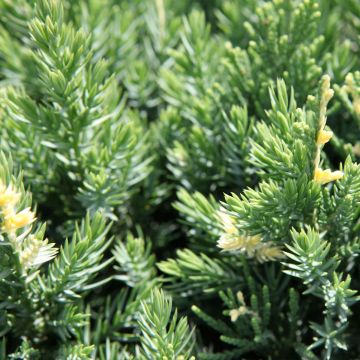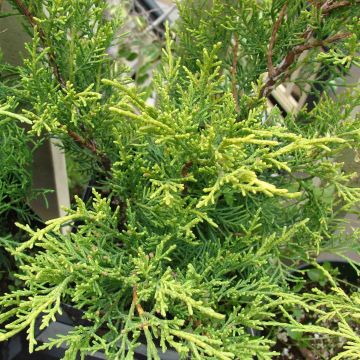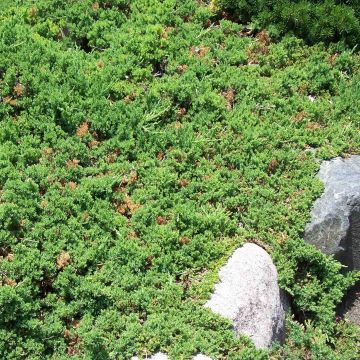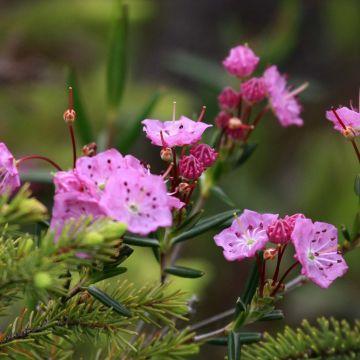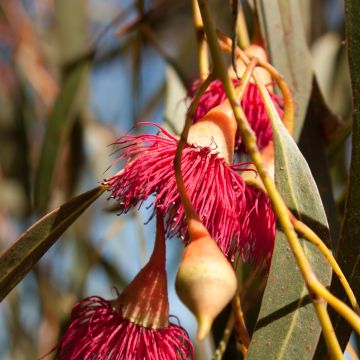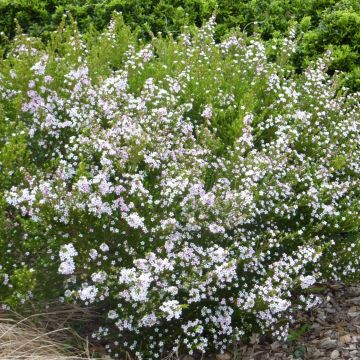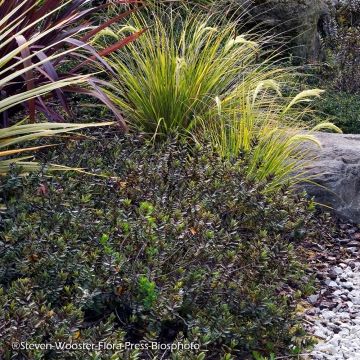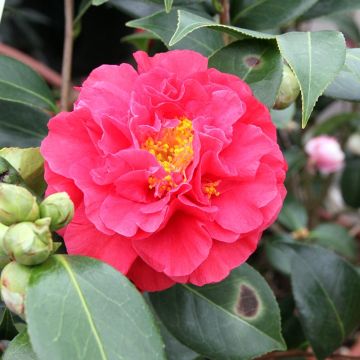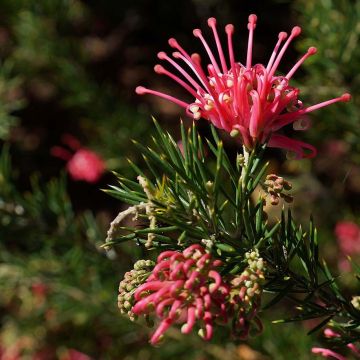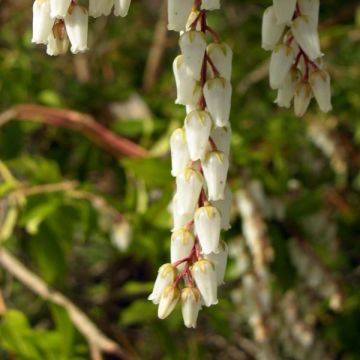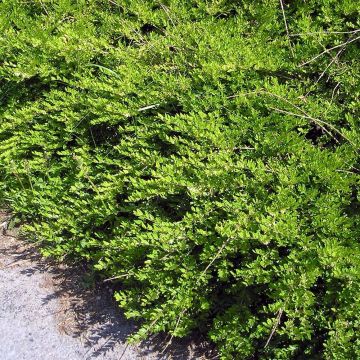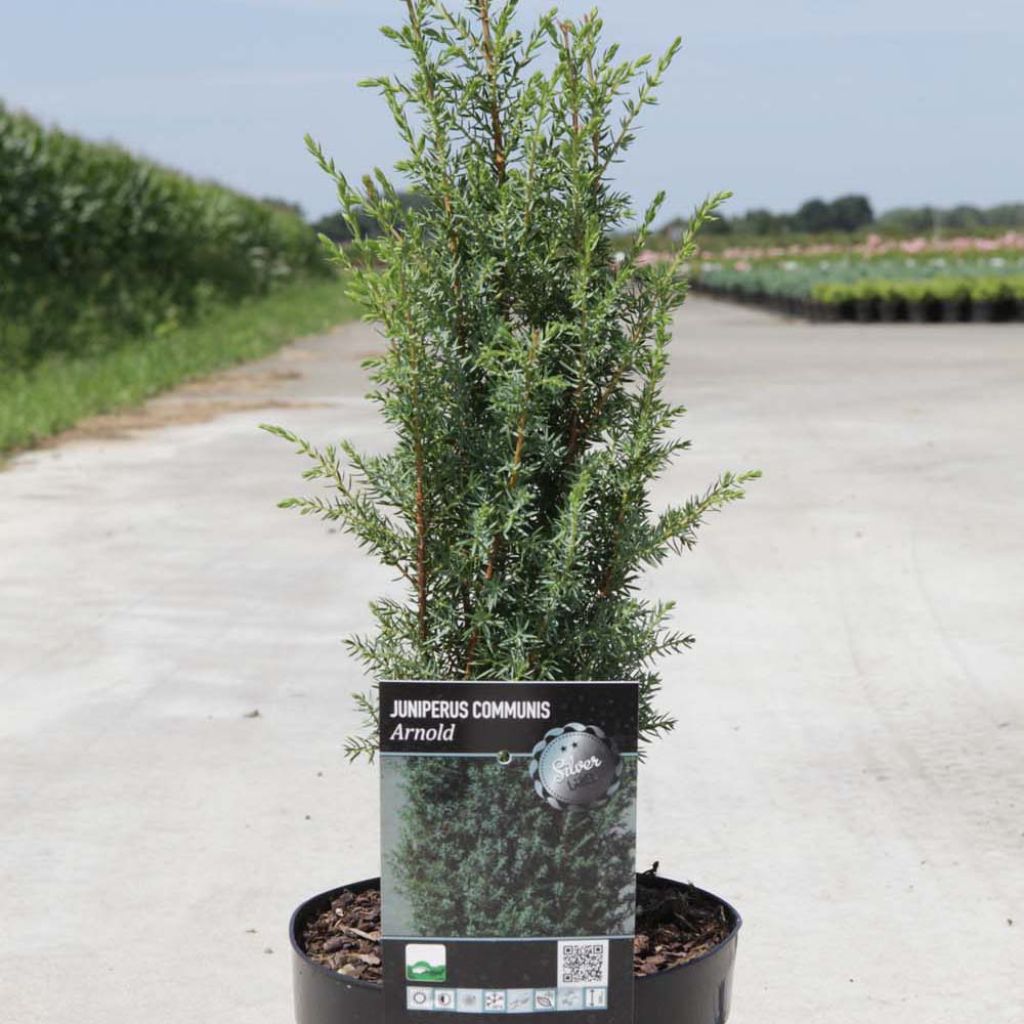

Juniperus communis Arnold
Juniperus communis Arnold
Juniperus communis Arnold
Common Juniper
This item cannot be shipped to the selected country
Delivery charge from €5.90
Delivery charge from €5.90
Delivery to Corse prohibited
More information
Schedule delivery date,
and select date in basket
This plant carries a 24 months recovery warranty
More information
We guarantee the quality of our plants for a full growing cycle, and will replace at our expense any plant that fails to recover under normal climatic and planting conditions.
From €5.90 for pickup delivery and €6.90 for home delivery
Express home delivery from €8.90.
From €5.90 for pickup delivery and €6.90 for home delivery
Express home delivery from €8.90.
Delivery to Corse prohibited: UE law prohibits the import of this plant from mainland France to Corse as part of the fight against Xylella fastidiosa. Please accept our sincere apologies.
More information

Does this plant fit my garden?
Set up your Plantfit profile →
Description
Juniperus communis 'Arnold', is a common juniper bush with an elegant and slender columnar habit, not very tall but beautifully coloured in green-gray-blue. While slow-growing, this conifer shows great resistance to cold and heat. Extremely undemanding, it even thrives in poor, rocky, and limestone soils and has few natural enemies. Showcase it by planting it as a standalone in a small garden, in the background of a large rock garden, or plant it in groups of three to mark an entrance or pathway.
Juniperus communis is an evergreen and spiny conifer belonging to the cypress family, which includes related species such as cypresses and chamaecyparis. It is native to northern Europe, North America, and Asia Minor. In its natural environment, it has a fairly variable habit, conical or spreading, reaching heights of 6 meters (19 feet 8 inches) and widths of 3 to 4.50 meters (9 feet 10 inches to 14 feet 10 inches). This species thrives in poor, sandy, and/or limestone soils and does not mind arid conditions.
The 'Arnold' juniper, derived from this species, forms a beautiful bush with a narrow columnar habit after 10 years, measuring approximately 2.50 metres (8 feet 2 inches) in height with a spread of 60 centimetres. It grows slowly when young, at a rate of 10 centimetres (3.9 inches) in height and 5 centimetres (2 inches) in width per year. Its growth accelerates slightly as it ages. A mature specimen will measure approximately 3 metres (9 feet 10 inches) in height and 80 centimetres (31.5 inches) in diameter. Its foliage consists of small, very sharp needles, tightly packed together, and emits a resinous and aromatic odour when rubbed. In spring, the young shoots emerge light green with a very pale underside, gradually turning a green-grey-blue colour. The fruits are borne by the female plants. They are scaly berries called galbuli, brown-black and rich in essential oil with numerous therapeutic properties. Its bark is grey-brown and peels over time, revealing a reddish-brown wood. Common junipers have a shallow root system that makes them vulnerable to strong winds and difficult to associate with perennials.
The 'Arnold' juniper is a hardy and elegant conifer that can be welcomed into the garden with its perfect habit and density. It is perfect anywhere. Its slow growth makes it ideal as a standalone, on a slope, in a large rock garden, or planted in groups of 3 specimens alongside shorter, rounded or bushy conifers. It also grows very well in containers and tolerates pruning, allowing for numerous uses. The architectural qualities of conifers naturally shine in the design of a contemporary garden, which prefers the aesthetics of forms, silhouettes, and textures over flowers. These plants provide lasting structure to a flowerbed, mark pathways and border terraces, easily replacing the strong presence of trimmed boxwood or holly. They pair well with mahonias or wild grasses with very complementary forms. They can also be associated with shade-tolerant, drought-tolerant perennials such as periwinkles, Euphorbia amygdaloides purpurea, epimediums, or Trachystemon orientalis. The key is to play with volumes and colours.
Report an error about the product description
Juniperus communis Arnold in pictures
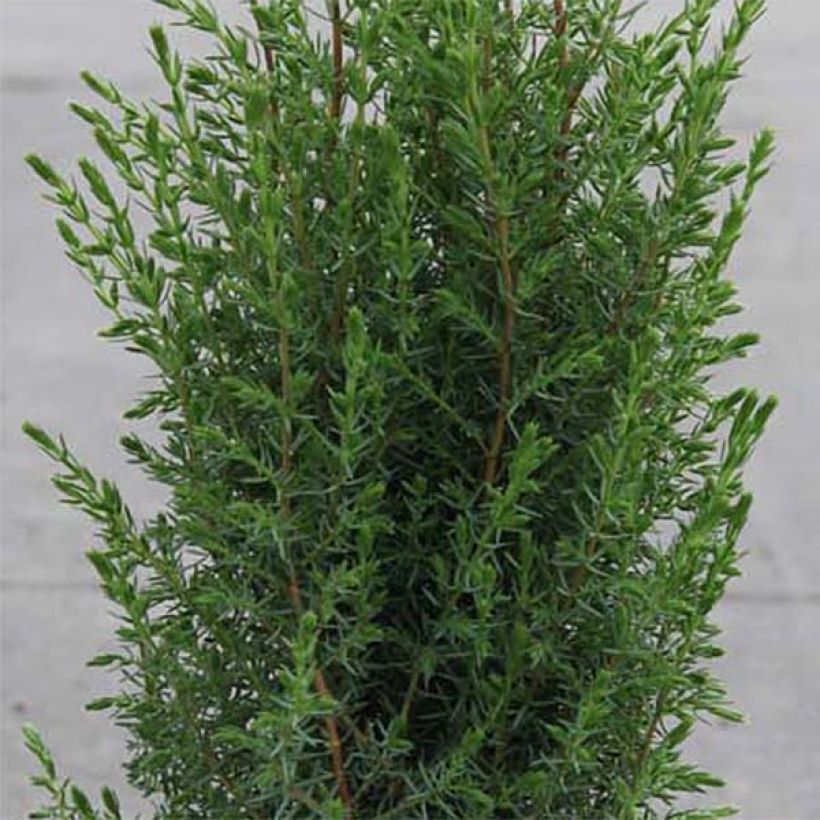

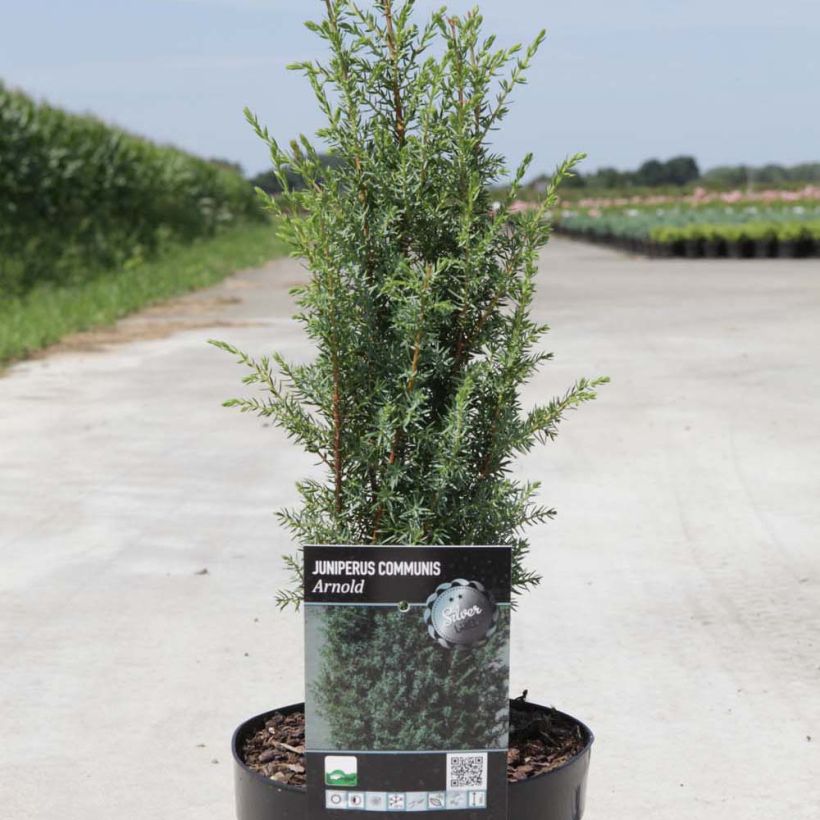

Plant habit
Flowering
Foliage
Safety measures
Botanical data
Juniperus
communis
Arnold
Cupressaceae
Common Juniper
Cultivar or hybrid
atteinterespiratoire
Cette plante peut entraîner des symptômes allergiques.
Evitez de la planter si vous ou vos proches souffrez de rhinite saisonnière ("rhume des foins").
Davantage d'informations sur https://plantes-risque.info
Other Juniperus - Juniper
Planting and care
Juniperus communis 'Arnold' is best planted from September to November and from February to June in well-drained, light, even limestone and poor soil. A rocky or sandy soil that is occasionally dry will not bother it. Choose a very sunny or semi-shaded location sheltered from prevailing winds that could uproot it. Soak the root ball well before planting. Add organic fertilizer at planting and water generously in the first few years. Every year in April, apply a special conifer fertilizer and weed the soil in summer. This very hardy conifer dislikes heavy, waterlogged soils in winter. Pruning involves removing one-third of the new shoots, which is done towards the end of June and can continue until the beginning of September. The goal is to maintain a beautiful shape, to form a hedge or a bonsai. Old wood, devoid of needles, rarely regrows.
Planting period
Intended location
Care
-
, onOrder confirmed
Reply from on Promesse de fleurs
Evergreen shrubs
Haven't found what you were looking for?
Hardiness is the lowest winter temperature a plant can endure without suffering serious damage or even dying. However, hardiness is affected by location (a sheltered area, such as a patio), protection (winter cover) and soil type (hardiness is improved by well-drained soil).

Photo Sharing Terms & Conditions
In order to encourage gardeners to interact and share their experiences, Promesse de fleurs offers various media enabling content to be uploaded onto its Site - in particular via the ‘Photo sharing’ module.
The User agrees to refrain from:
- Posting any content that is illegal, prejudicial, insulting, racist, inciteful to hatred, revisionist, contrary to public decency, that infringes on privacy or on the privacy rights of third parties, in particular the publicity rights of persons and goods, intellectual property rights, or the right to privacy.
- Submitting content on behalf of a third party;
- Impersonate the identity of a third party and/or publish any personal information about a third party;
In general, the User undertakes to refrain from any unethical behaviour.
All Content (in particular text, comments, files, images, photos, videos, creative works, etc.), which may be subject to property or intellectual property rights, image or other private rights, shall remain the property of the User, subject to the limited rights granted by the terms of the licence granted by Promesse de fleurs as stated below. Users are at liberty to publish or not to publish such Content on the Site, notably via the ‘Photo Sharing’ facility, and accept that this Content shall be made public and freely accessible, notably on the Internet.
Users further acknowledge, undertake to have ,and guarantee that they hold all necessary rights and permissions to publish such material on the Site, in particular with regard to the legislation in force pertaining to any privacy, property, intellectual property, image, or contractual rights, or rights of any other nature. By publishing such Content on the Site, Users acknowledge accepting full liability as publishers of the Content within the meaning of the law, and grant Promesse de fleurs, free of charge, an inclusive, worldwide licence for the said Content for the entire duration of its publication, including all reproduction, representation, up/downloading, displaying, performing, transmission, and storage rights.
Users also grant permission for their name to be linked to the Content and accept that this link may not always be made available.
By engaging in posting material, Users consent to their Content becoming automatically accessible on the Internet, in particular on other sites and/or blogs and/or web pages of the Promesse de fleurs site, including in particular social pages and the Promesse de fleurs catalogue.
Users may secure the removal of entrusted content free of charge by issuing a simple request via our contact form.
The flowering period indicated on our website applies to countries and regions located in USDA zone 8 (France, the United Kingdom, Ireland, the Netherlands, etc.)
It will vary according to where you live:
- In zones 9 to 10 (Italy, Spain, Greece, etc.), flowering will occur about 2 to 4 weeks earlier.
- In zones 6 to 7 (Germany, Poland, Slovenia, and lower mountainous regions), flowering will be delayed by 2 to 3 weeks.
- In zone 5 (Central Europe, Scandinavia), blooming will be delayed by 3 to 5 weeks.
In temperate climates, pruning of spring-flowering shrubs (forsythia, spireas, etc.) should be done just after flowering.
Pruning of summer-flowering shrubs (Indian Lilac, Perovskia, etc.) can be done in winter or spring.
In cold regions as well as with frost-sensitive plants, avoid pruning too early when severe frosts may still occur.
The planting period indicated on our website applies to countries and regions located in USDA zone 8 (France, United Kingdom, Ireland, Netherlands).
It will vary according to where you live:
- In Mediterranean zones (Marseille, Madrid, Milan, etc.), autumn and winter are the best planting periods.
- In continental zones (Strasbourg, Munich, Vienna, etc.), delay planting by 2 to 3 weeks in spring and bring it forward by 2 to 4 weeks in autumn.
- In mountainous regions (the Alps, Pyrenees, Carpathians, etc.), it is best to plant in late spring (May-June) or late summer (August-September).
The harvesting period indicated on our website applies to countries and regions in USDA zone 8 (France, England, Ireland, the Netherlands).
In colder areas (Scandinavia, Poland, Austria...) fruit and vegetable harvests are likely to be delayed by 3-4 weeks.
In warmer areas (Italy, Spain, Greece, etc.), harvesting will probably take place earlier, depending on weather conditions.
The sowing periods indicated on our website apply to countries and regions within USDA Zone 8 (France, UK, Ireland, Netherlands).
In colder areas (Scandinavia, Poland, Austria...), delay any outdoor sowing by 3-4 weeks, or sow under glass.
In warmer climes (Italy, Spain, Greece, etc.), bring outdoor sowing forward by a few weeks.

































